
Our special New Year lunch

At the restaurant we snapped photos: Susindar (2nd from left)
with his daughter Sanju, his parents, and his wife (far right).
1 January Chennai
On the earlier visit with Susindar to the New Woodlands
Hotel for lunch, I noticed a sign advertising a special Happy New Year lunch.
Susindar wished to go and brought his wife, daughter, and parents. Here we sat
at long narrow tables while the servers brought South Indian vegetarian food to
our banana-leaf plates. We could ask for extra portions and seconds if we
wished. I though the food some of the best I’ve had, and Susindar and his family
enjoyed it too.

Our special
New Year lunch

At the
restaurant we snapped photos: Susindar (2nd from left)
with his daughter
Sanju, his parents, and his wife (far right).
After lunch, Susindar and family drove home. I walked
south to Narada Gana Sabha to watch a Bharatanatyam dance by Barghav Hariharan.
After the conclusion I walked north to the Music Academy to hear a performance
by two nadaswaram players, Vengal T. Guhan and Ayyampettai Kesavaraj. This
double-reed wind instrument from South India has been described as “among the
world’s loudest non-brass acoustic instruments.” I had become fond of hearing it
in temples during my first visit to Tamil Nadu in 1983. They’re commonly played
in pairs and accompanied by a pair of thavil drums, as Panapakkam G. Tamilselvan
and Kancheepuram J. Sivamanikandan did at this concert. After the nadaswaram
concert I stayed for the Sadas, a major awards ceremony to conclude the
Academy’s music season. After the Sadas I waited for the concluding program, but
after a delay of 40 minutes I found that it consisted largely of non-English
readings that didn’t interest me, so I left. Across Cathedral Road I swung by
the ice cream parlor at Amaravathi Andhra and dove into a “crunchy crackle”
butterscotch ice cream dessert.
2 January Chennai
For lunch I felt
like something Italian, so crossed the street to Basil With a Twist for a
pumpkin soup and an eggplant parmesan. In late afternoon I met up with Susindar
at his home for another walk. We followed the same route as before and crossed
the long bridge over the Adyar River, but instead of turning in at the
Theosophical Society, we followed roads east to the coast and its long and wide
beach. Small fishermen’s boats, laden with nets, stood on the sands, and the
fishing village lay just to the north. To the south stretched a vast recreation
area with beachgoers, food stalls, and carnival rides. We walked along the
beachfront and detoured to the gentle waves of unappealing gray water crashing
on the beach. Most people sat or stood on the sand in small groups, with a brave
few wading into the sea. We got popcorn, then began the long walk in the dark
back to Susindar’s home. Lastly we drove to the Sree Akshayam restaurant for
dinner of tomato soup, gunthur podi idly, and a dosa with vada curry. Susindar
headed home, but I stayed for a butterscotch ice cream.

The broad Adyar
River attracts birdlife.
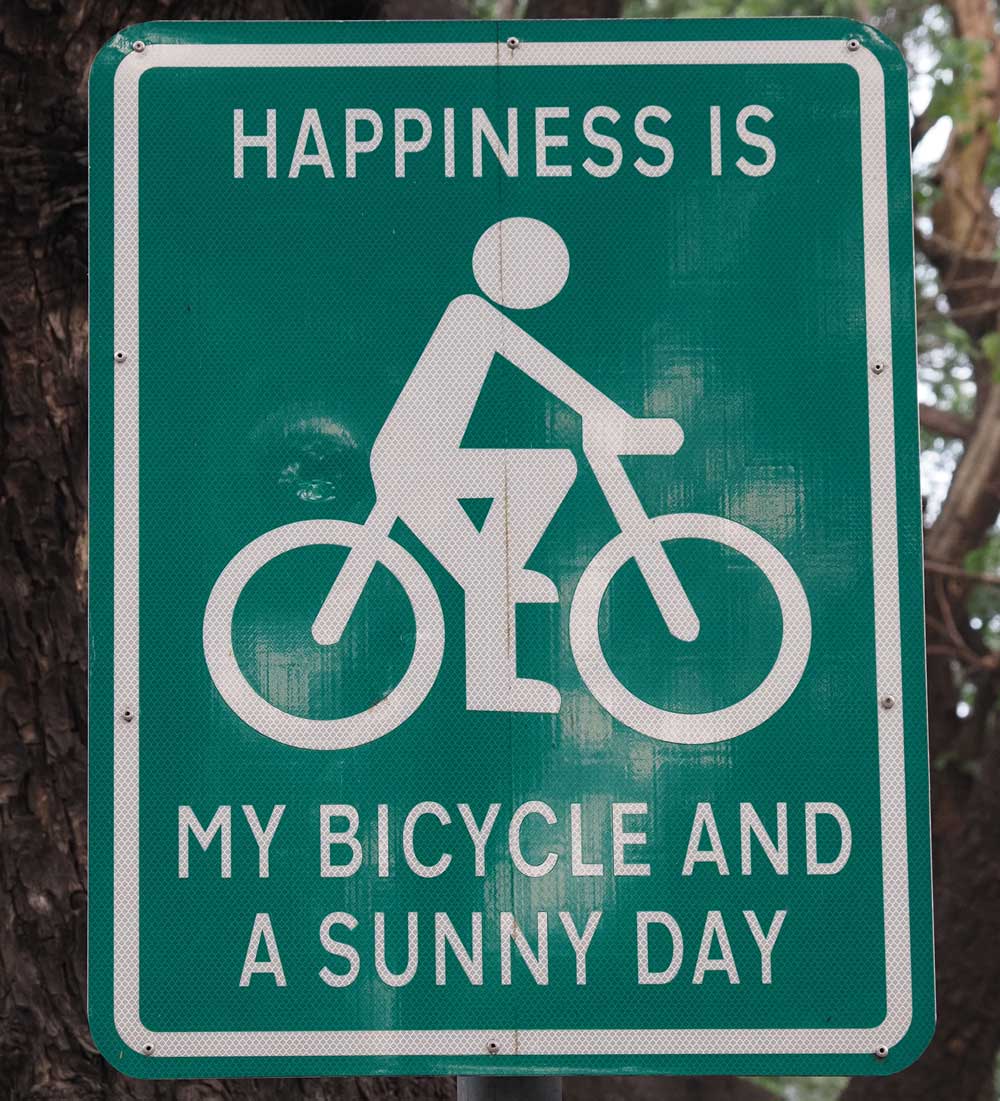
Signs encourage
cycling and walking for happiness and good health!

Massive trees shade
Besant Avenue
Fishing boats rest on the beach

A bit farther
south, people chat and watch the waves.

Lots of food
stands line the beach.
On the right you can see the Annai Velankanni
Church (Basilica of Our Lady of Good Health), a pilgrimage site.

Visitors are more
likely to just wet their toenails rather than go for a swim.
3 January
Chennai
A local family runs the Airbnb where I’m staying, and the father
offered to take me out to breakfast this morning. He’s very nice and told me
about his family. Unlike most people in Chennai who are Tamil, he is Telugu,
originally from Andhra Pradesh. We went to the vegetarian South Indian
restaurant at Hotel Palmgrove, where I had a Karnataka-style idly and a masala
dosa—both very tasty—then a milk tea.
On my visits to Chennai I like to
swing by the Government Museum, a huge complex of buildings and some with
fanciful architecture. Started in 1851, it’s the second oldest museum in India
after the Indian Museum in Kolkata. Foreigner’s admission is Rs. 250, and for an
extra Rs. 200 I got a photo permit. First I stopped to admire the 1909 Victoria
Memorial Hall, built to commemorate the Golden Jubilee of Queen Victoria. I’ve
never seen it open, but the exterior Indo-Saracenic architecture is full of
wonderful stonework. Next door I entered the Contemporary Art Gallery, where the
collection is so old that it’s now really Modern Art. A line-up of large
portraits of British governors from the 19th and early 20th centuries occupy one
end of the main hall, but the real attraction is the collection of paintings and
a few sculptures by famous Indian artists including many by Raja Ravi Varma
(1848-1906).

Victoria Memorial
Hall
Stonework finery of the Victoria Memorial Hall

British governors
from long ago pose for visitors.

City Scape II
(watercolor) by P. Jaya Kani
I liked this for the many bicycles appearing in
it!
Mother and Child (oil on cardboard) by K.C.S. Panicker (1911-77)
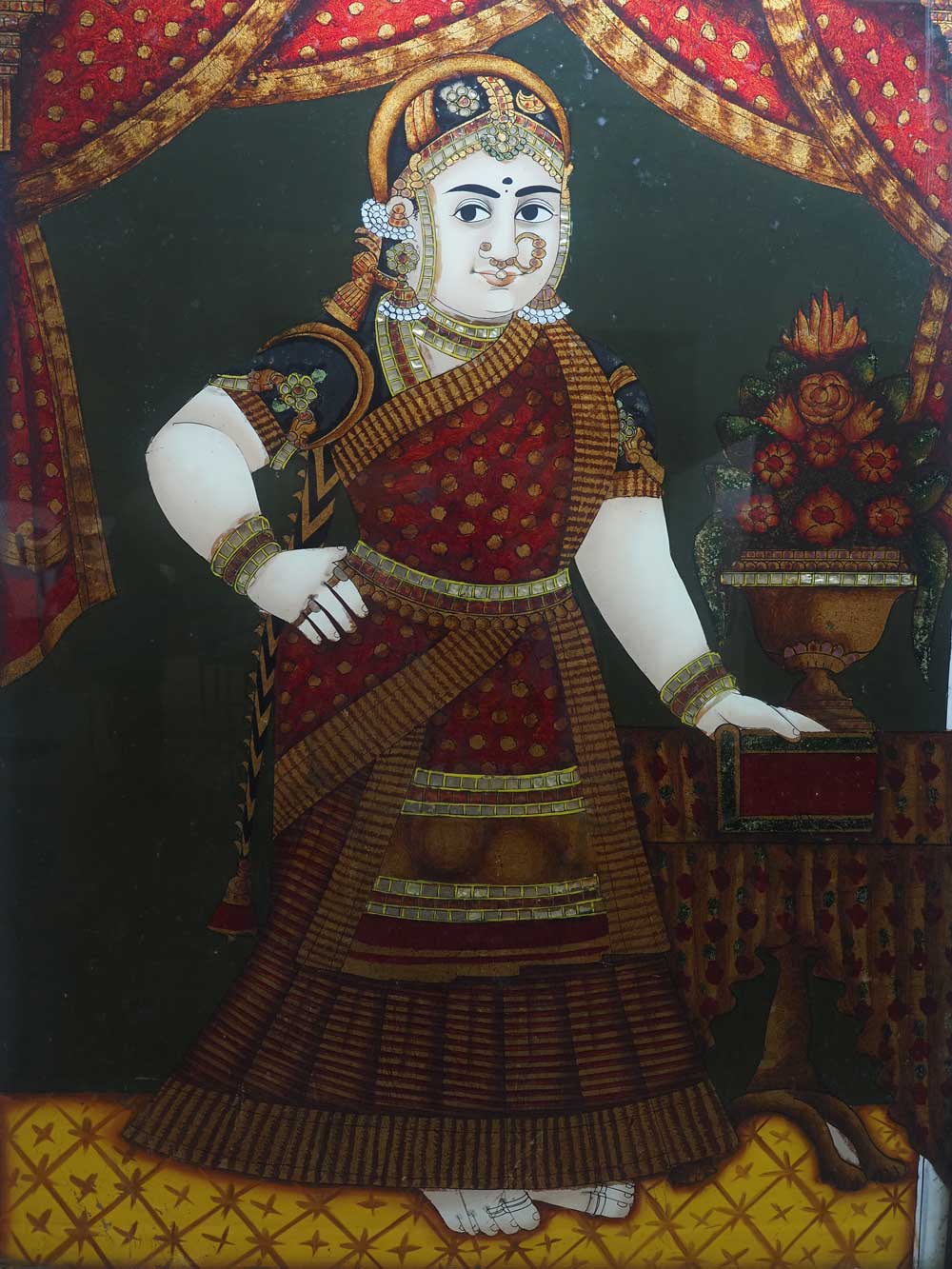
Portrait of a Lady
(painting on glass)
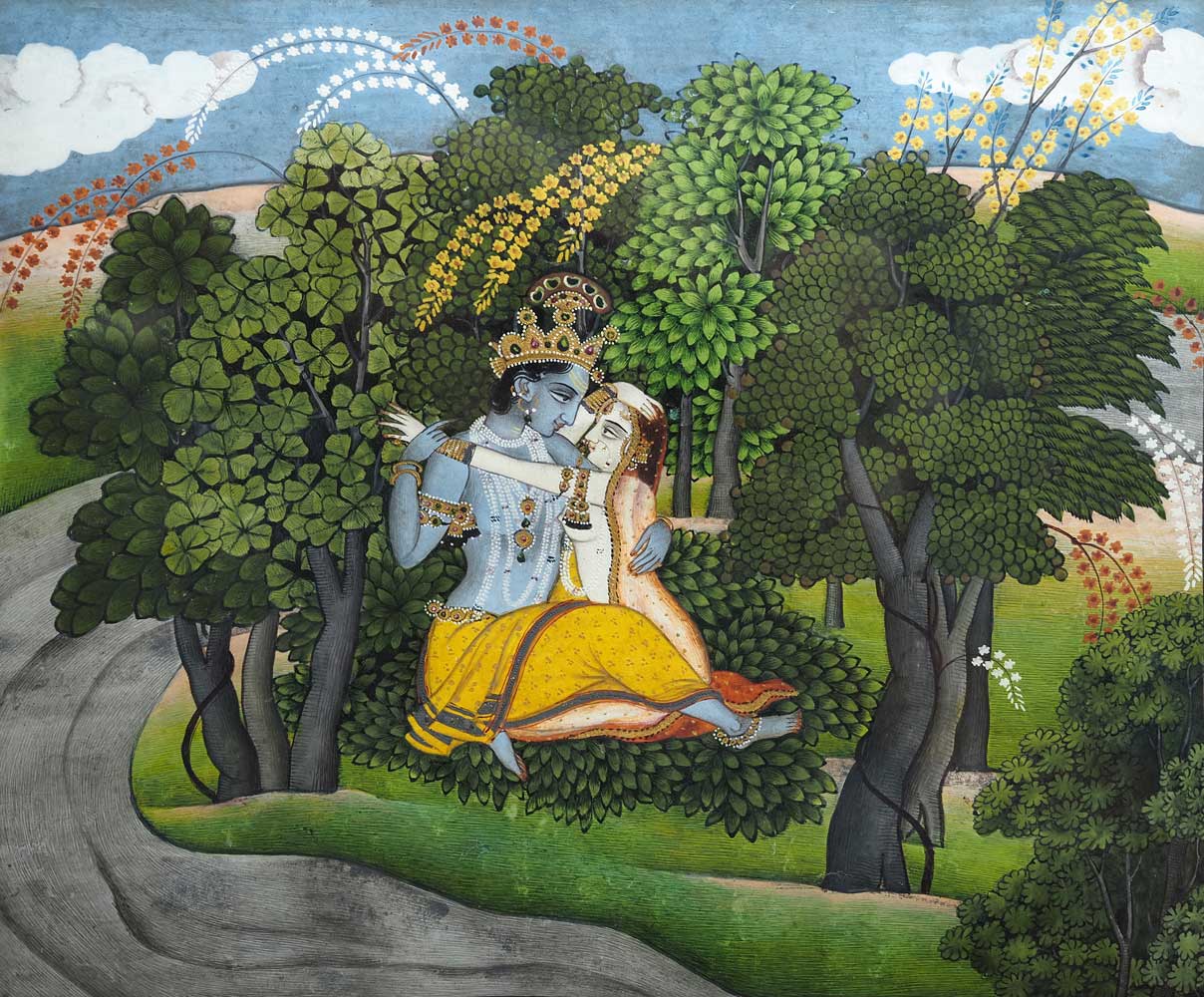
Radha and
Krishna (tempera), Kangra School of Paintings, late 18th and early 19th C.

Yoki
(oil on canvas) by Arpana Kaur (1954-)
I skipped the Children’s Museum and headed to the Front Building, a vast two-level hall that houses prehistory, ethnology, folk culture, and arms collections. The dusty exhibits are mostly in poor shape, but the building itself has a marvelous grand staircase, painted ceilings, and lots of colorful stained glass.

Museum Theater
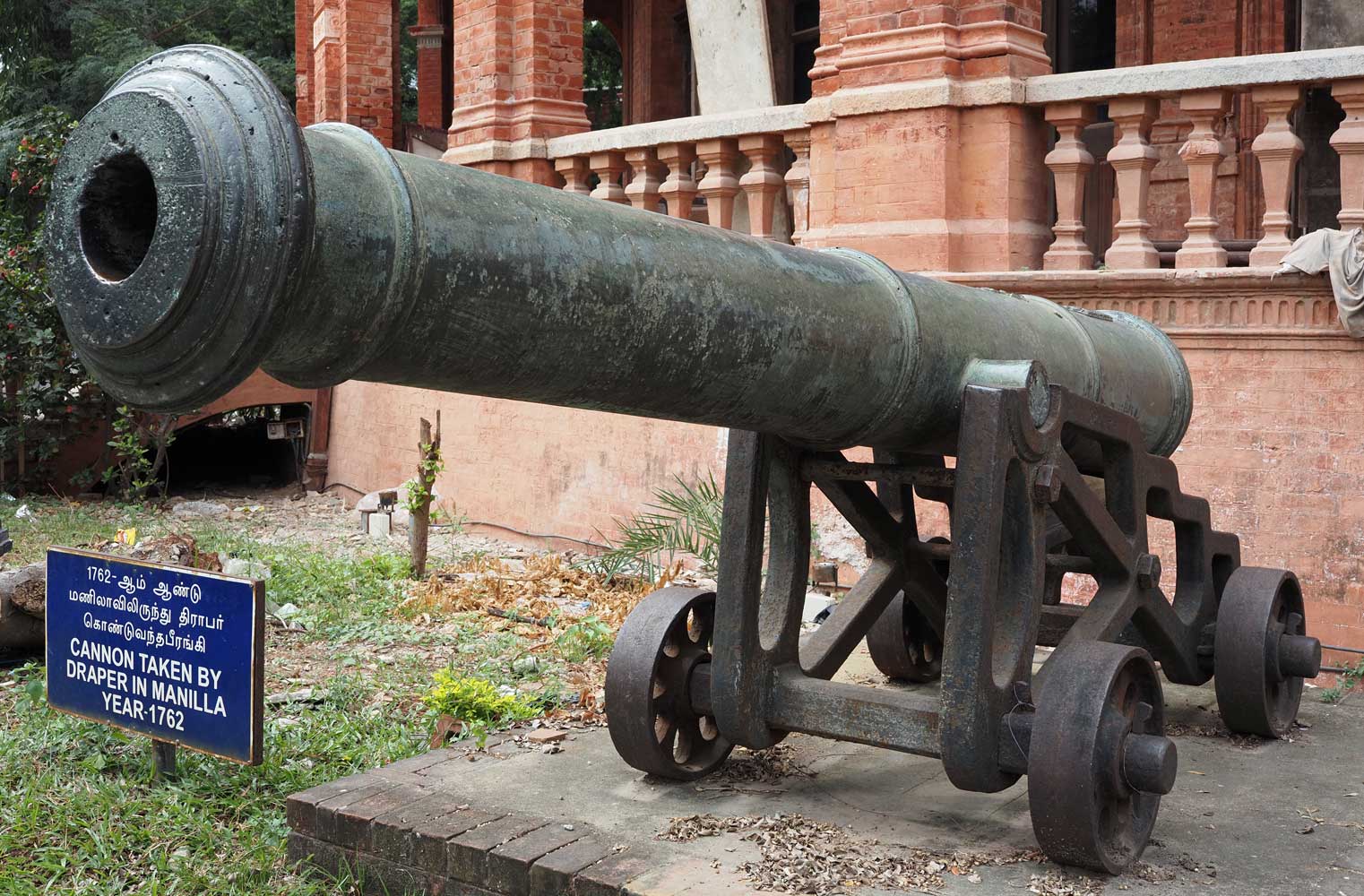
Cannons guard
the Museum Theater.
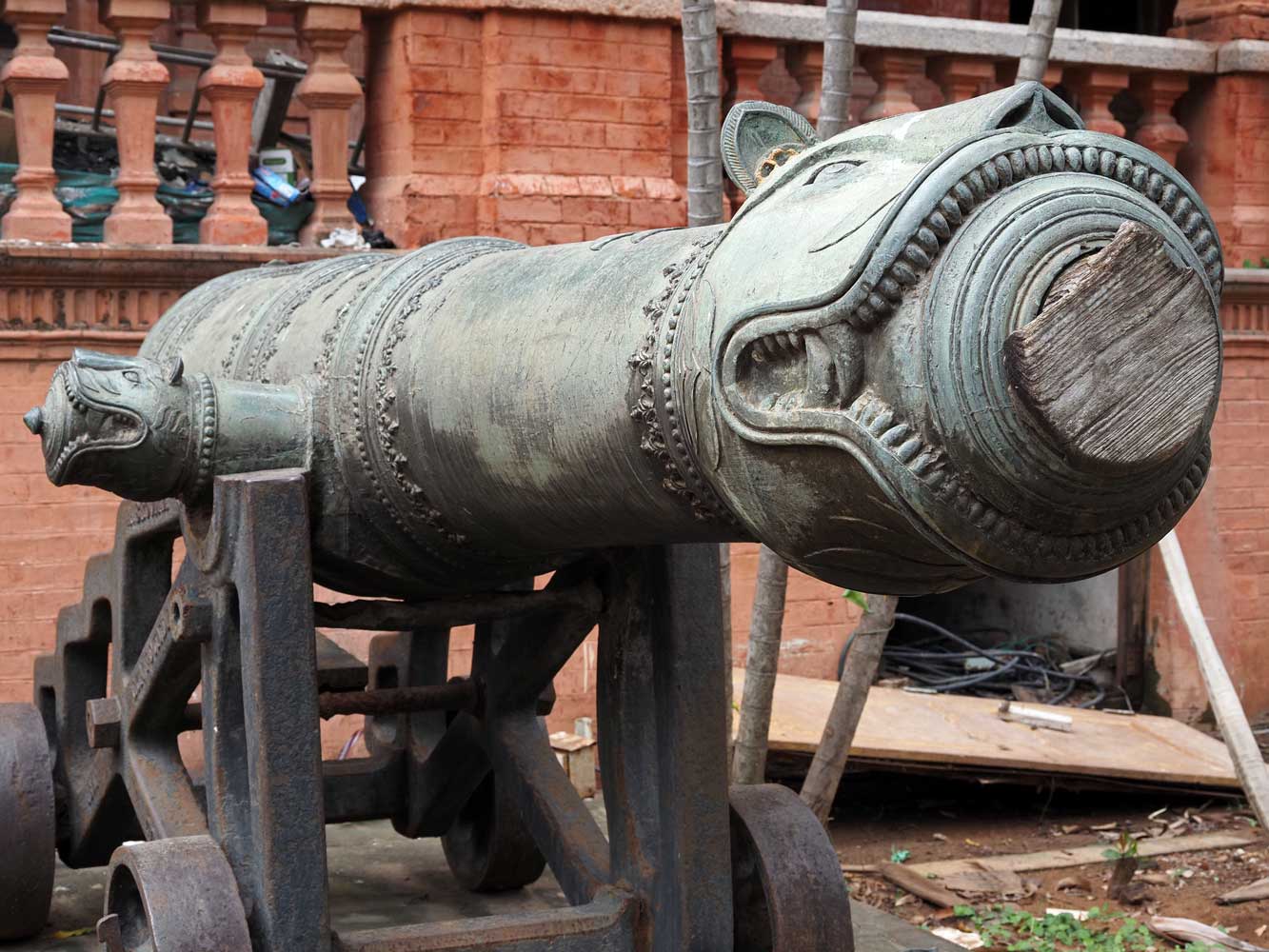
The army of Tipu
Sultan used this cute cannon at Srirangapattinam
(Karnataka) in 1799, but
the British defeated Tipu Sulan and he lost his life.
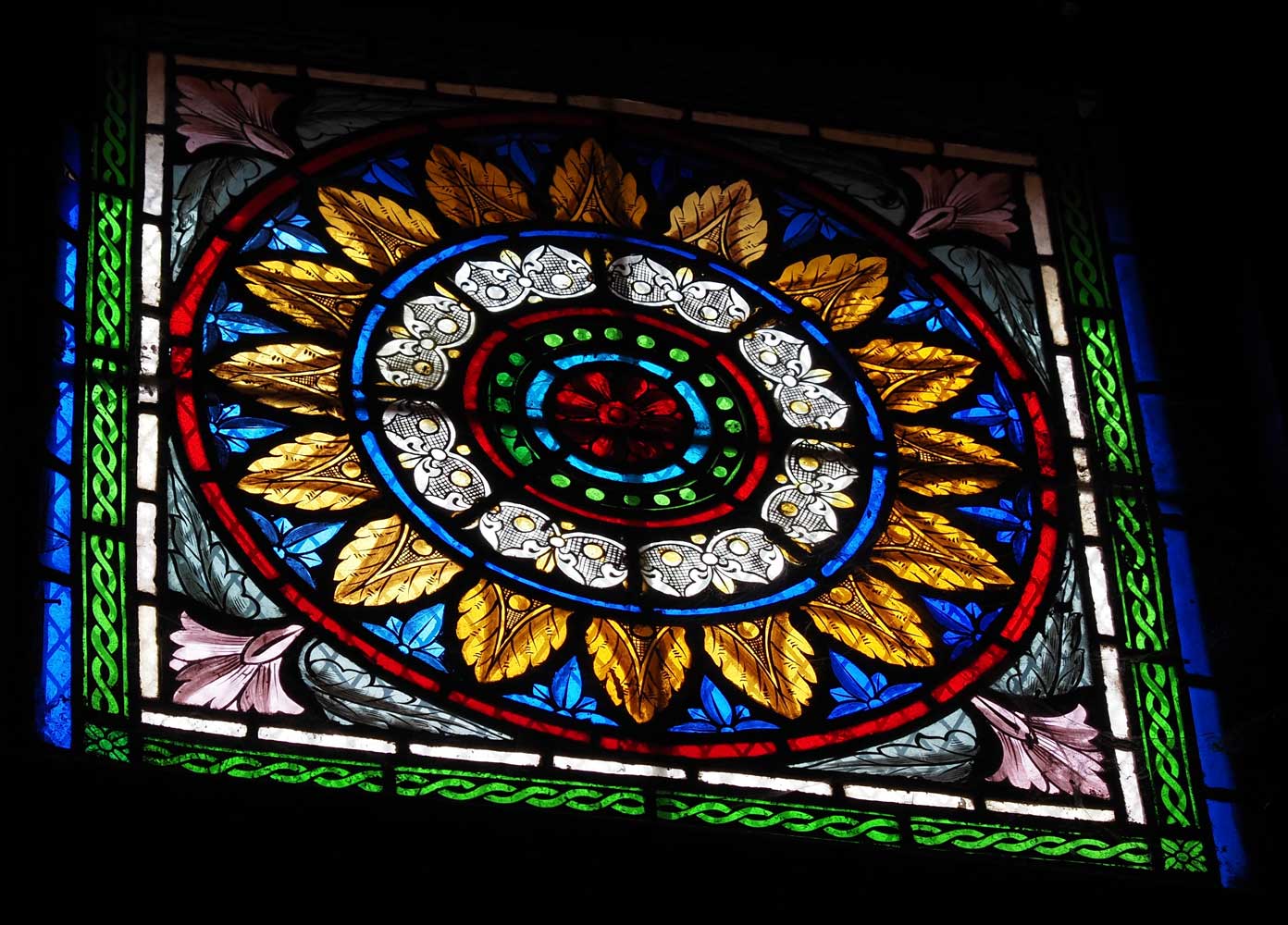
Stained-glass
windows add color inside the Front Building.

People needed these
in the old days!
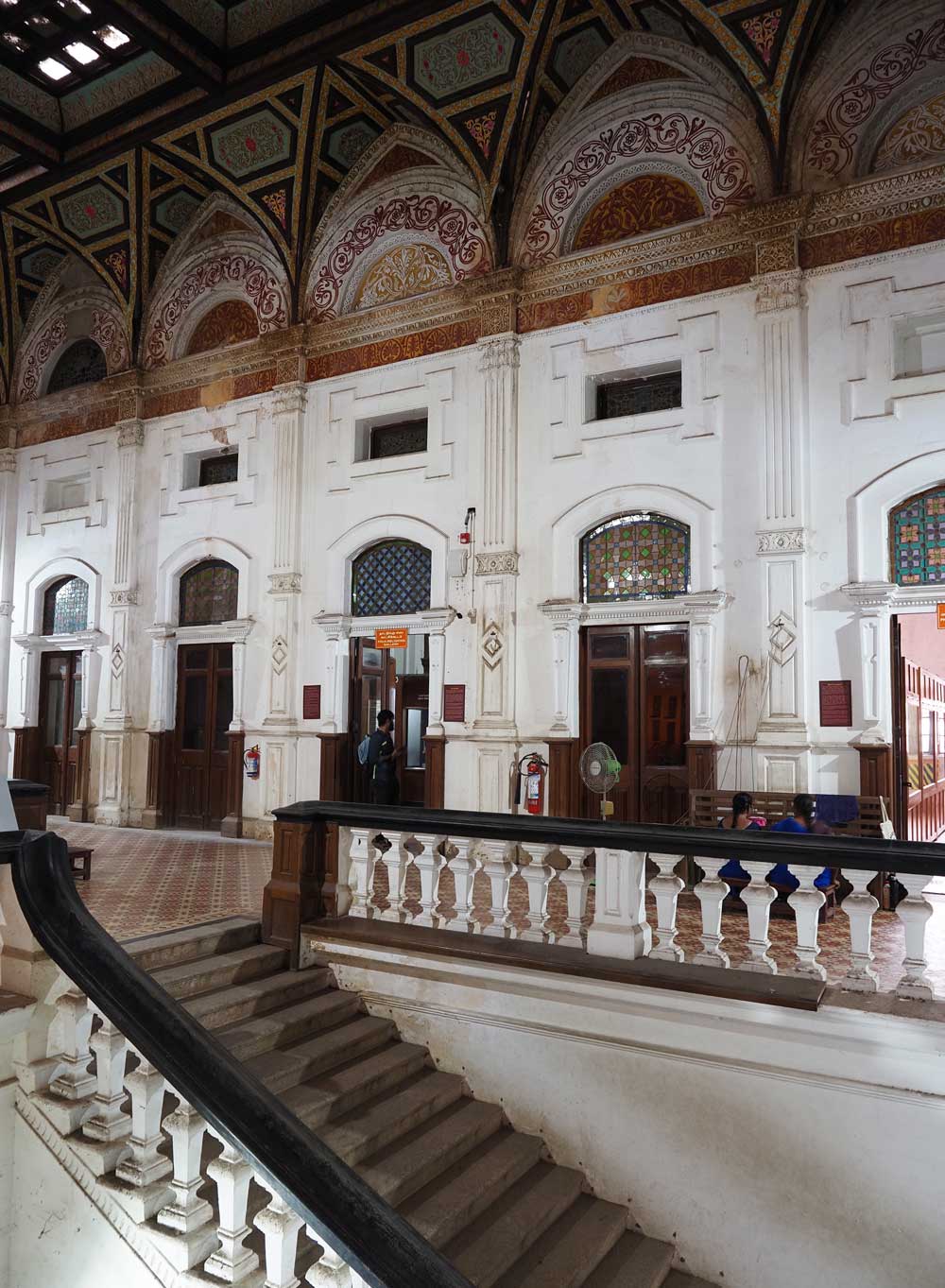
Galleries branch
off this grand hall in the Front Building.
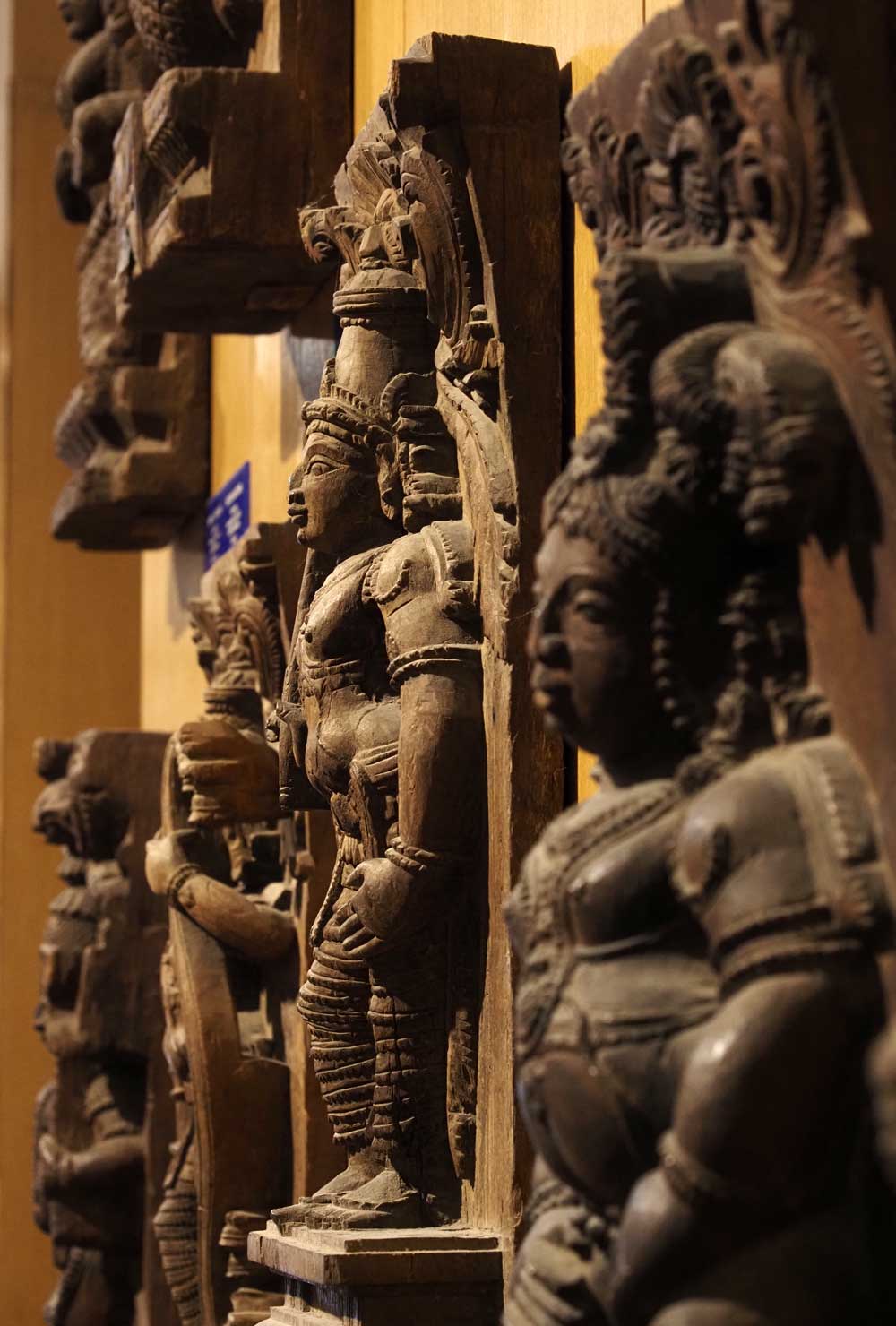
Part of the carved
wood exhibit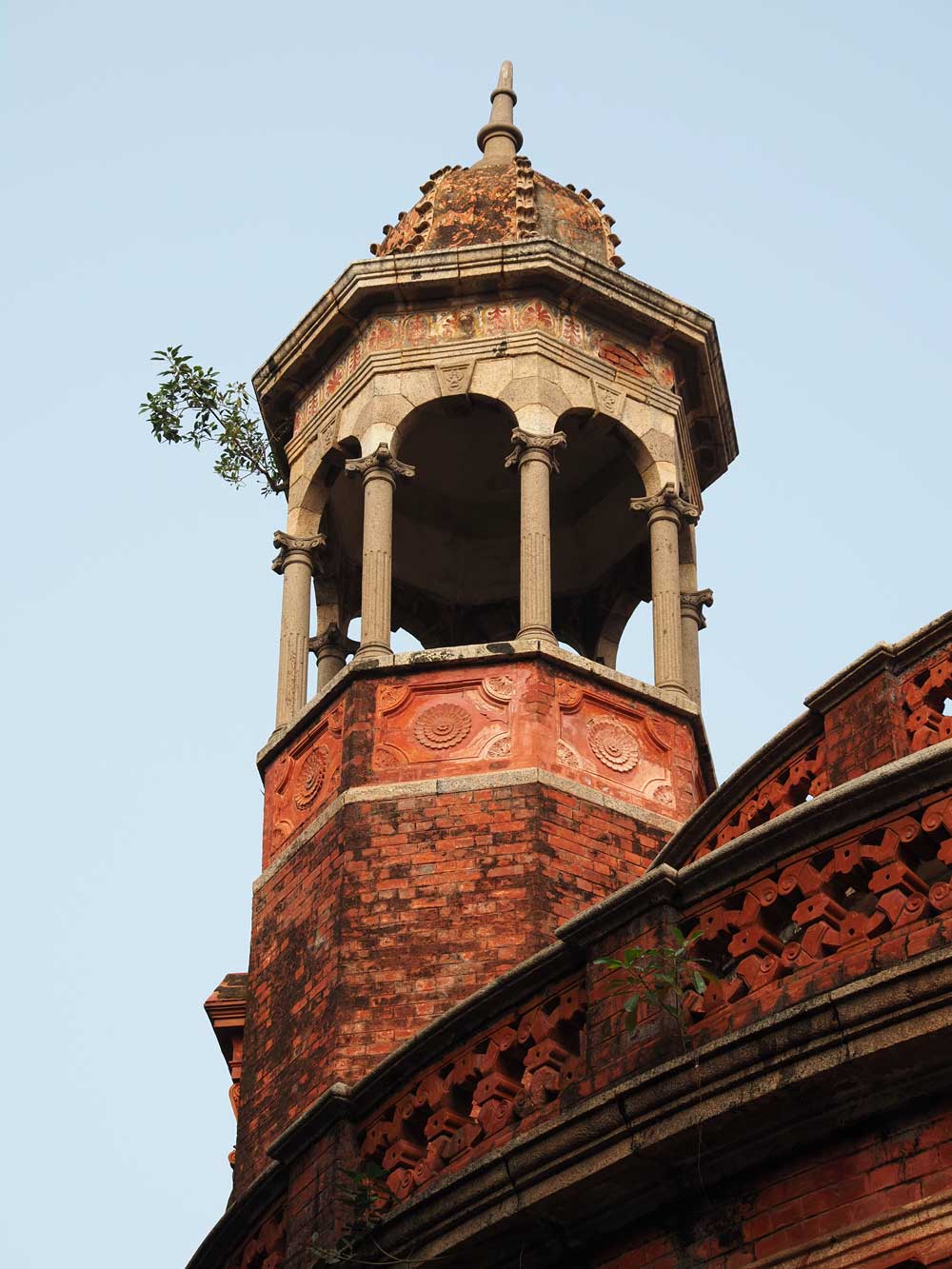
Picturesque towers rise from the Front Building.
The Bronze Gallery easily ranks as the museum’s top collection with three levels of gleaming statues, nearly all from the Hindu pantheon—especially Shiva—and small numbers of Buddhist and Jain works.

Bronze Gallery
(main level)
An unusual pose of Nandi, vehicle of Shiva (ca. 17th C.)
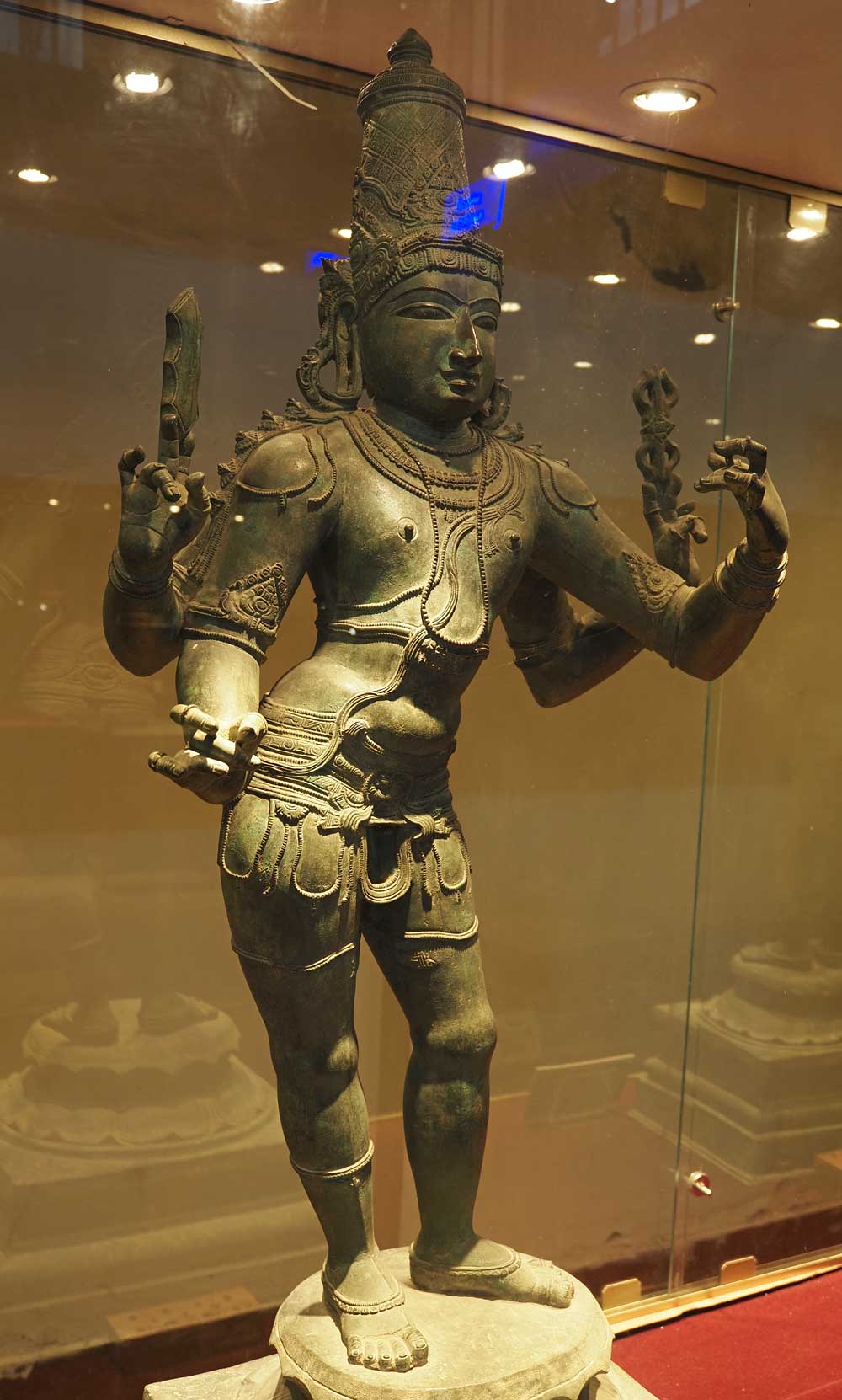
Subrahmanya (13th
C.) from Jambavanodai, Undivided Thanjavur District
Lastly I wandered the vast spaces and extensions of the Main Block which house stone sculptures—again mostly Hindu—and many pieces from the great Buddhist stupa of Amaravathi. Natural history galleries display dusty dinosaur fossils, stuffed native and foreign fauna, and sea life.

Vishnu, from
Coimbatore District, Tamil Nadu
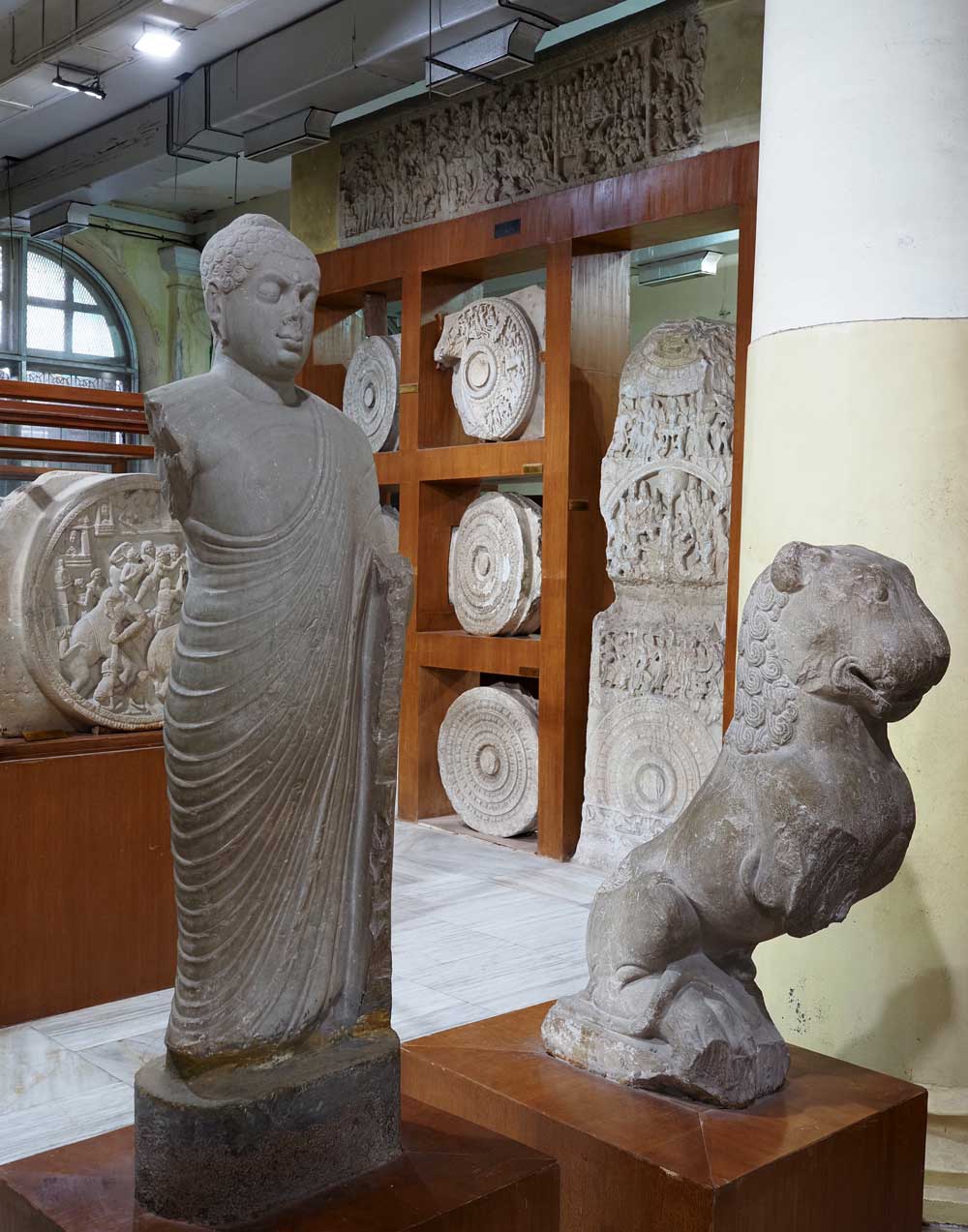
Artwork from
Amaravathi Stupa, Andhra Pradesh
From the museum I caught an auto taxi to Bharat Kalachar, first to watch a solo Bharatnatyam performance by K. Kaavya. The venue has a temporary ‘canteen’ tasty food where I got a good dinner of a masala dosa plus a carrot halwa dessert. Next, Shiva Mohanam & Group performed Kuchipudi dances, which I especially enjoyed because the group created many delightful motions and assemblages.

Musicians for the
solo Bharatnatyam performance by K. Kaavya
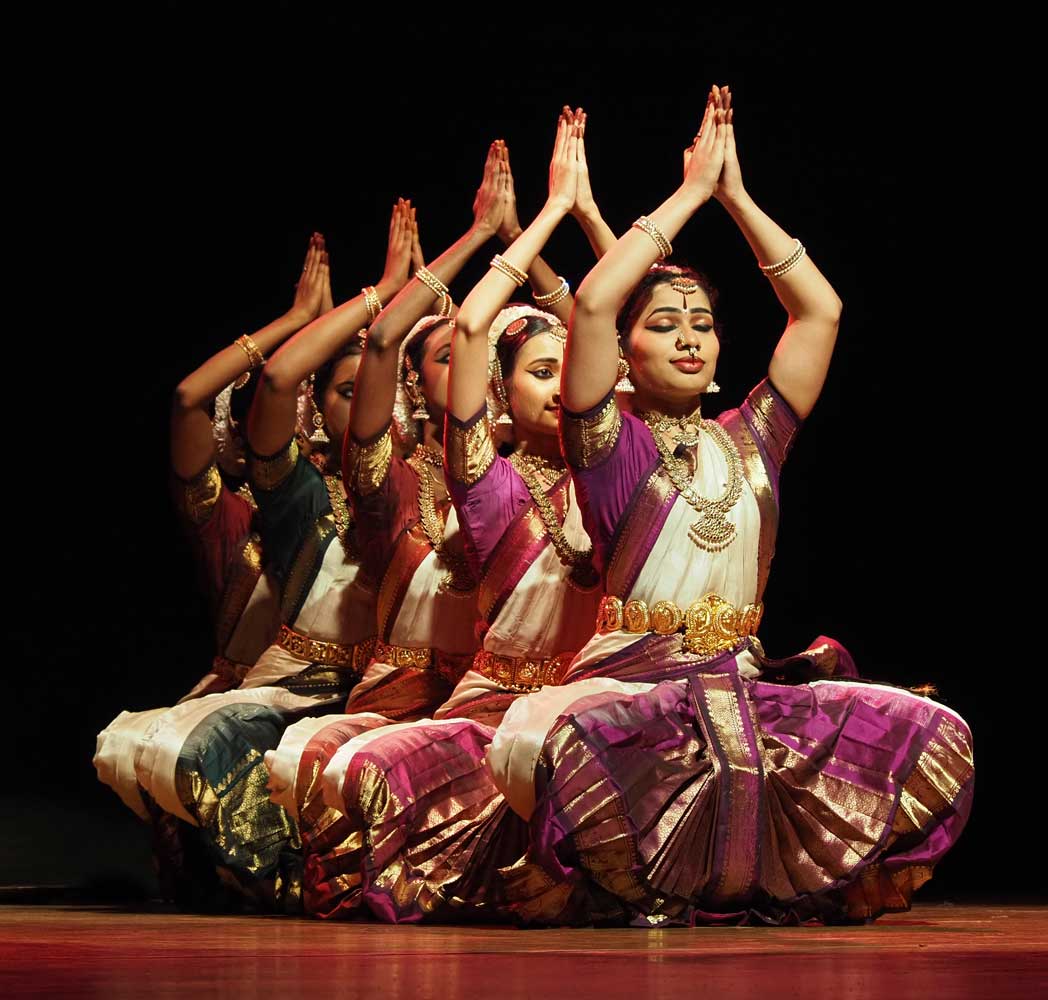
Kuchipudi dance by
Shiva Mohanam & Group
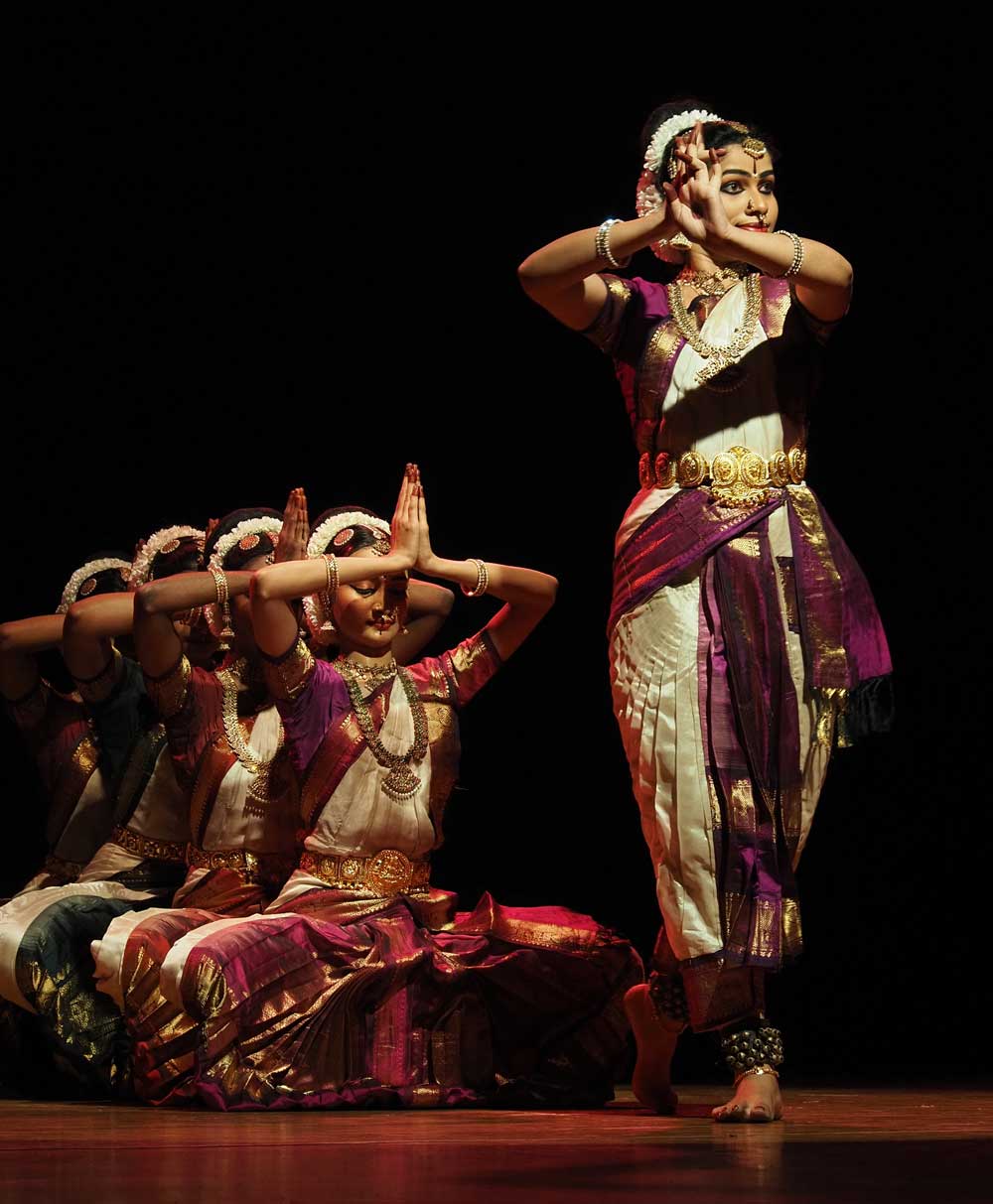
Kuchipudi dance by
Shiva Mohanam & Group
4 January Chennai
I spent much of the day catching up on laundry, sorting
through photos taken in recent days, and bringing this journal up to date. Rain
fell during the afternoon, creating big puddles and flooding side streets, but
had nearly stopped when I headed to Bharat Kalachar for the day’s two group
Bharatanatyam dances. Guru Dr. Thushara Srinivasan led her young students in
stories about Krishna and Vishnu in “Lasya Nrityalayam.”


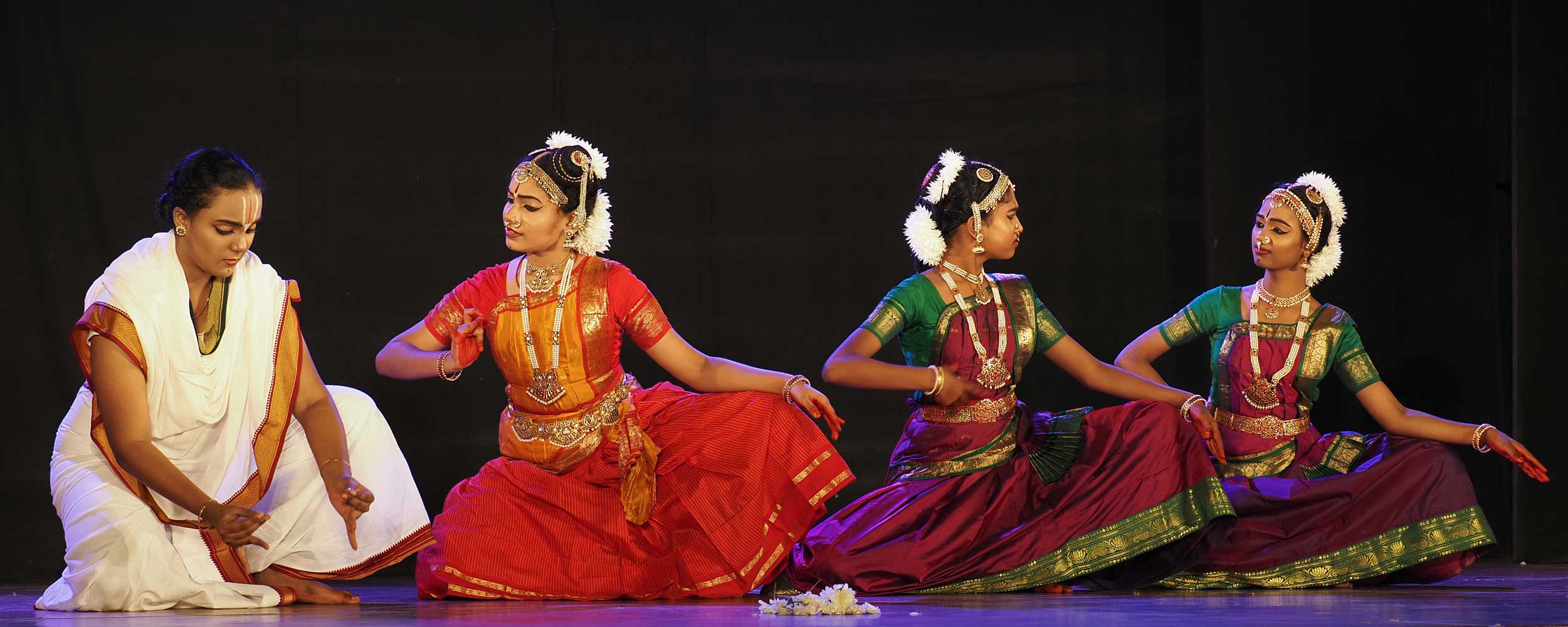

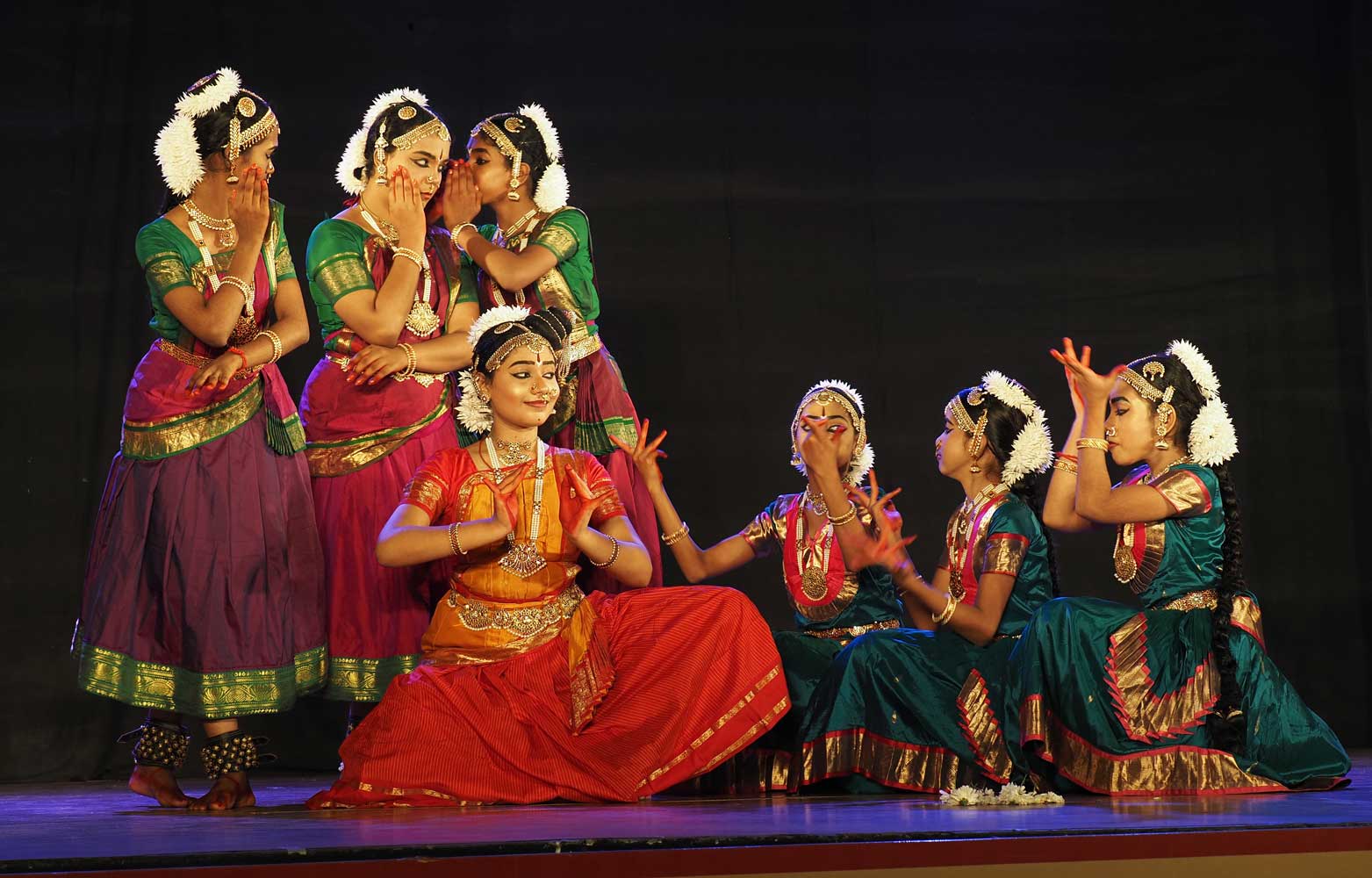
Srikala Bharath & Thejass then presented “Mahila Mahima—Women’s Grandeur,” an especially wonderful series of dances, though only a tiny audience had come, perhaps dissuaded by the earlier rainfall. At the venue’s canteen I went with sambar vada (savory doughnuts in sauce) and a big helping of arisi upma (rice and dal with abundant seasonings) before the program, then a dosa and a halwa sweet in the break between the performances.

5 January Chennai
I headed to the Music Academy for its two midday solo dance
performances: Divya Shiva Sundar performed Bharatanatyam dances and
Shreelakshmy Govardhan offered Kuchipudi. Afterward I crossed the road to the
south to the restaurant Amaravathi, which specializes in cuisine from Andhra
Pradesh, the state to the north of Tamil Nadu, and went with the “Special Meals” Veg
Bhojanam, a South Indian thali served on a banana leaf that includes rice,
sambar (lentil-based vegetable stew), kara kuzhambu (vegetables flavored with a
roasted coconut-spice paste), rasam (sweet-sour soup), akukoora (greens and
dal), muddhakura (mashed taro root), appalam (papadam—thin, crisp, disc-shaped
crackers), vadiyalu (rice and sago cracker), uppu mirapakaya (curd chillies),
curd, pickle, chutney, and a sweet. For extra taste I sprinkled dal powder and ghee atop
the rice.
In the afternoon I visited Susindar at his home, then in
the evening we drove to Bharat Kalachar for a
pair of Bharatanatyam performances: A solo by Guru Maalini Balaji of Udikshana
Sangeetha Vidyalaya, then a group “Om Saravana Bhava” by disciples of Padmini
Krishnamurthy, Director at Sri Saraswathy Gana Nilayam. Susindar especially
liked the group dance. Om Saravana Bhava may be
translated as “Salutations to the son of Shiva, who brings auspiciousness and
who is chief of the celestial army.” Om is the sacred, primal sound of the
universe, and Om Saravana Bhava is the powerful mantra of Lord Murugan.
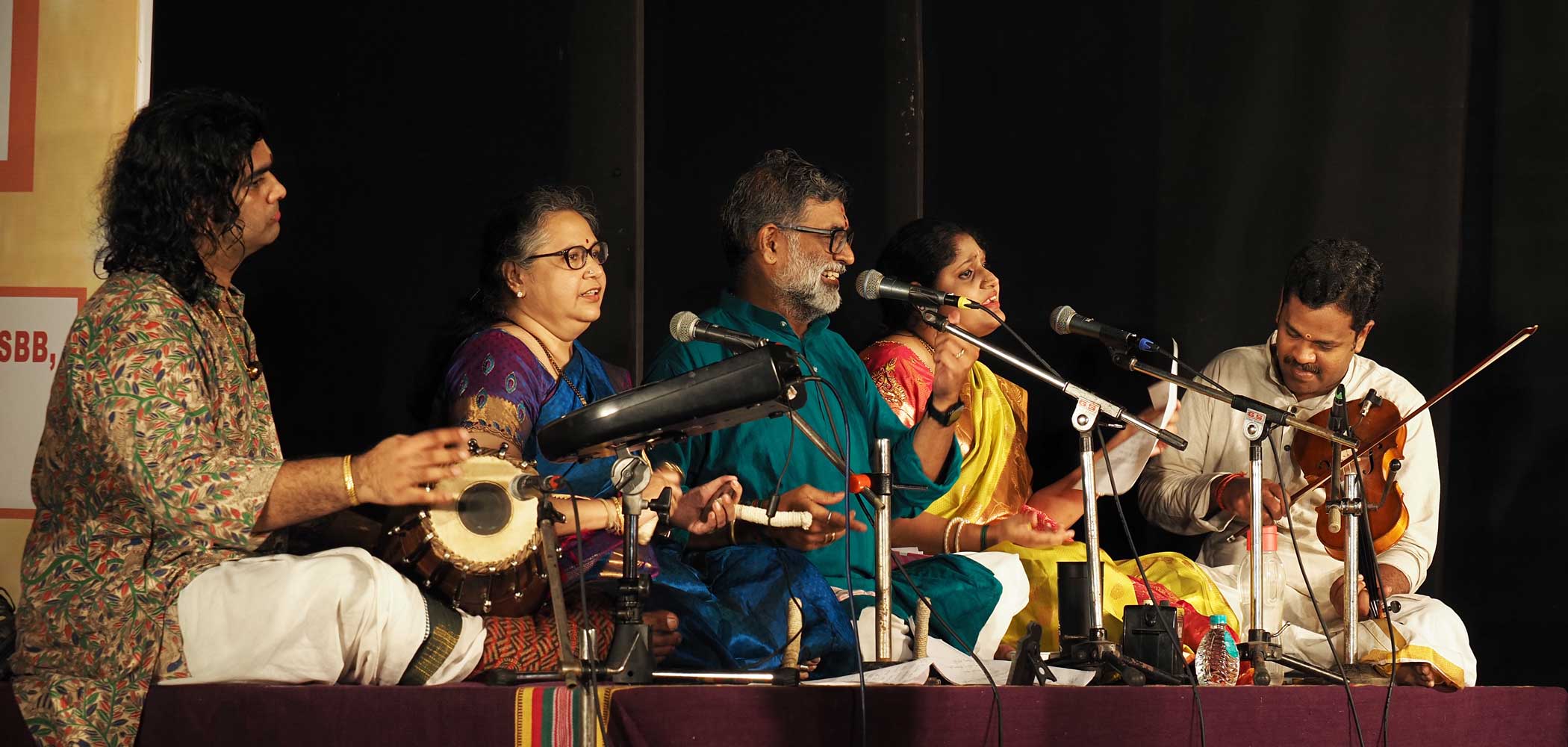
The orchestra for
Guru Maalini Balaji was unusual in having two main vocalists, third and fourth
from the left.
“Om Saravana Bhava” dancers assemble into a complicated pose.
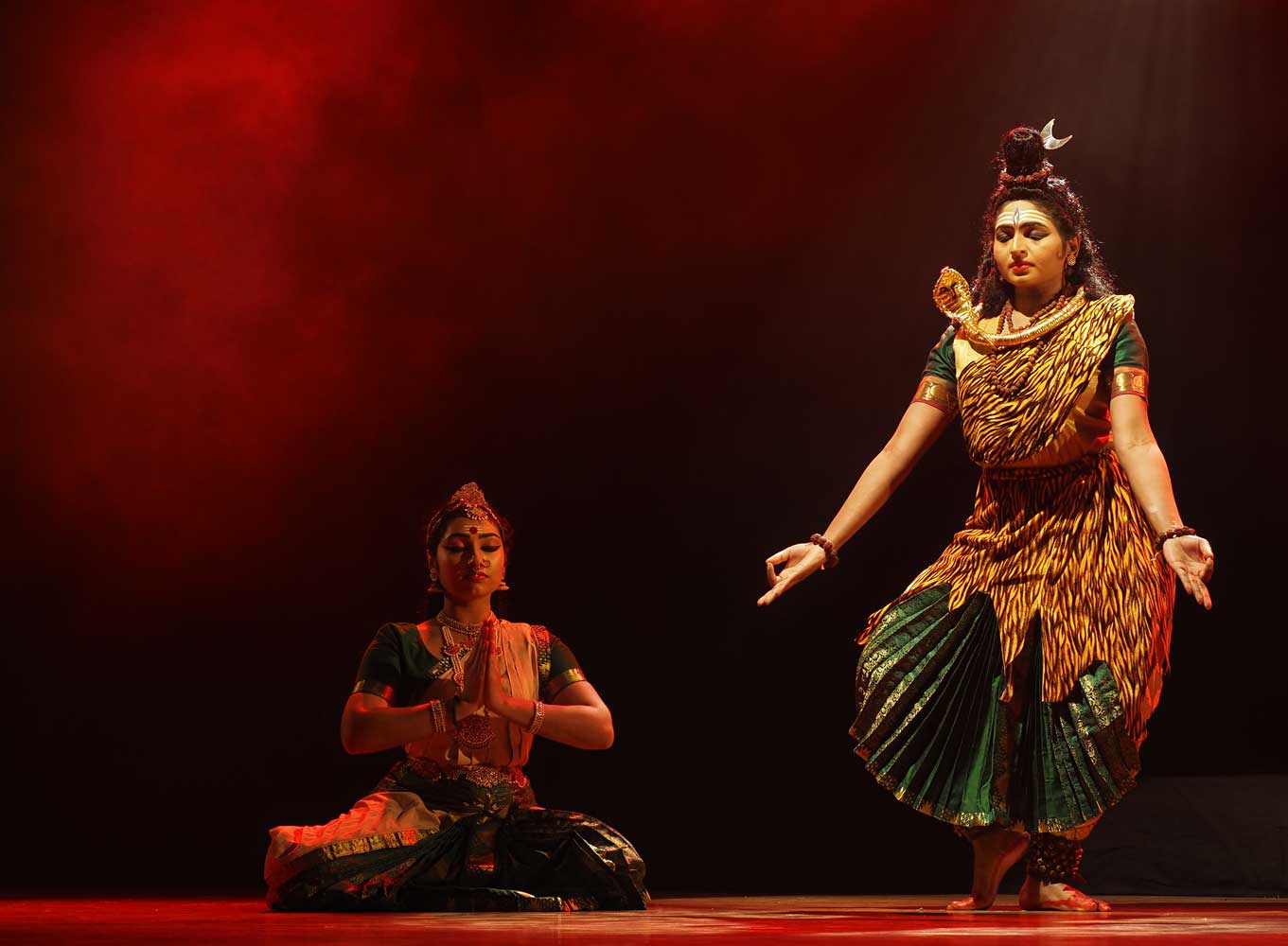
Murugan, first son of Shiva, (left) praying to Shiva (right).

Shiva leads a group
of dancers.
Murugan and Shiva

The four-faced
Brahma meets with Murugan.

Ganesh—Murugan’s
younger brother—makes an appearance.

Another dazzling
ensemble of dancers
6 January
Chennai-Bangkok flight
On my last day in Chennai I took in all three of the
Music Academy’s morning and midday dance performances, all solo Bharatanatyam.
Medha Hari conveyed interpretations of the god Vishnu, aspects of the embrace of
Krishna, and Parvathi with her first son Kartikeya (also known as Skanda,
Subrahmanya, Shanmukha, and Murugan) and second son Ganesh, then concluded with
a Tillana (pure dance). Meera Sreenarayanan presented stories about Murugan,
widely regarded as the “God of the Tamil people.” Previously all the solo
dancers I had seen on this visit to Chennai had been women, but now I watched
the male dancer Parshwanath S. Upadhye perform a series of dances about
fireflies attracted to light, Krishna, Ramakrishna praying to Kali, then a
Tillana (pure dance). The male dancer seemed just as graceful as the women
dancers and followed similar movements, though the dances for males are said to
be choreographed for them.
Susindar told me that most festival venues
offer food, and that for some people this is a bigger attraction than the
program! I was not aware that the canteen at the Music Academy opened early in
the morning for breakfast, or I would have taken advantage of it. Susindar,
however, knew about the breakfast and had come this morning for it, then he joined me to watch the last two dances.
Afterward we headed across the road to Amaravathi restaurant, where we both enjoyed the
“Special Meals” Veg Bhojanam before saying goodbye. Meeting up with Susindar has
added a great deal to my enjoyment of Chennai!
I returned to my room and
did some packing for tonight’s flight to Bangkok, then walked to Bharat Kalachar
for a recital by the woman vocalist J.B. Keerthana accompanied by a mridangam,
morsing (similar to a Jew’s harp) and violin I’m amazed by the
stamina of Indian musicians, and this program went for nearly two hours with
instrumental solos to give the vocalist short periods of rest.
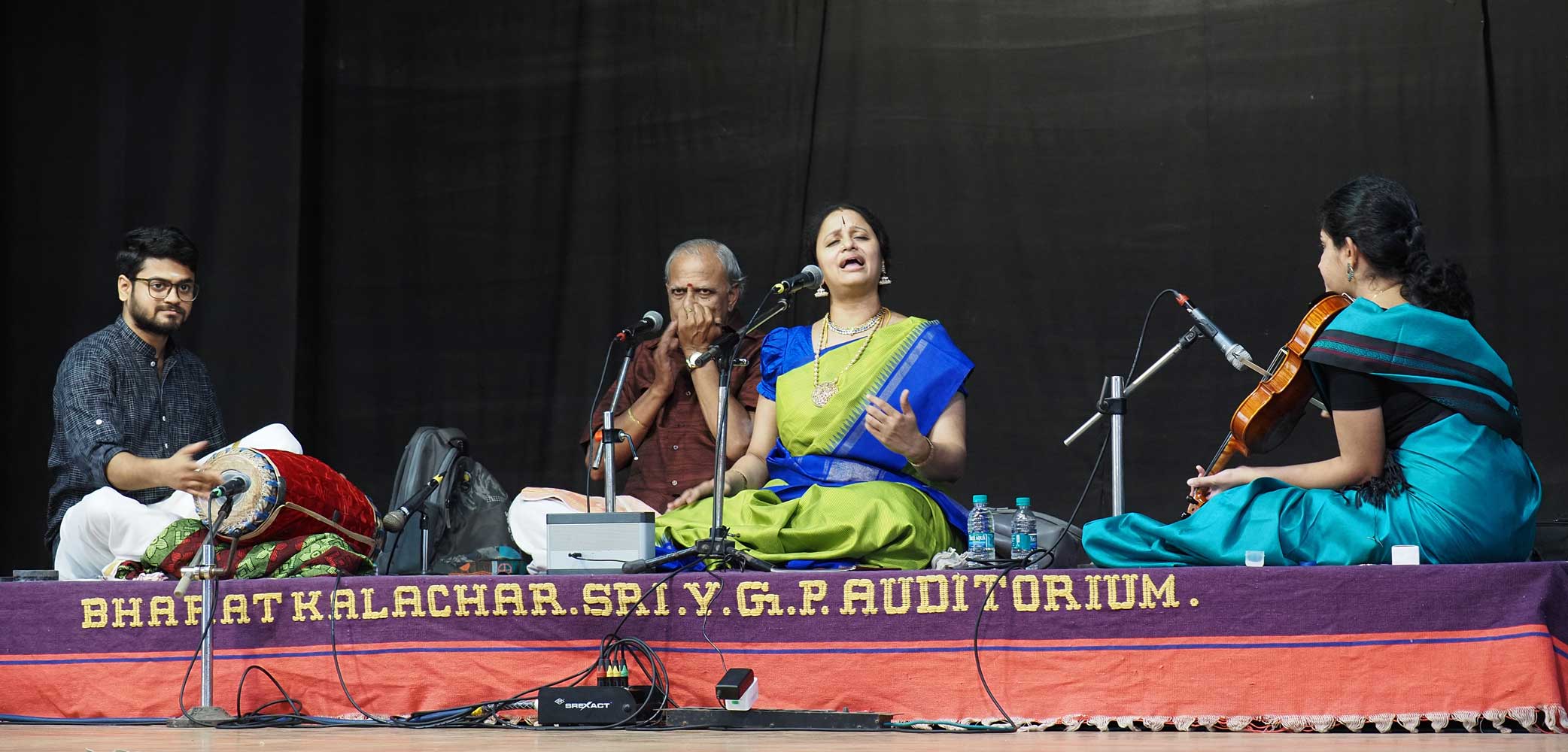
I like Indian
biscuits and chocolates, so picked some up on the walk back to my room. As I’m
also fond of using Indian soaps, I bought some of these too. I easily finished
packing up, then got a three-wheeled auto taxi for the short ride to the nearby
Metro station. I thought this would be an easy trip, but one-way roads and heavy
traffic made for a much longer journey than I expected. Once at the station I
got a bargain Rs. 40 ticket for the smooth ride to the airport, much nicer than
taking a wild taxi ride weaving through thick traffic. Check-in for Air Asia
Flight FD 154 went a bit slowly, but I had plenty of time. Security and
immigration went quickly, then I waited for the bus to take passengers out to
the plane. The full Airbus A320-200 climbed into the sky a little before
midnight for the three-hour journey due east across the Bay of Bengal. I had a
tasty little dinner of vegetarian Hyderabadi biryani. The flight, which I had
booked back in October, cost $142.62.
7 January Bangkok
Oddly I
didn’t get sleepy at all during the flight, which arrived at Bangkok’s Don
Mueang Airport in the pre-dawn darkness at about 4 a.m. We people over age 70
get to use an express immigration line, which saved a good bit of time, then I
picked up my bag and got a Grab taxi to a tiny apartment in an Airbnb building
that I’ve been staying at in recent years.
This India visit has been a great one, and I plan
to return to Chennai for the next Indian classical music and dance festival in December
2024-January 2025, plus swing by other parts of India as well. Now I have a busy five days
in Bangkok to take care of a couple medical check-ups, attend a Buddhist
meeting, enjoy a symphony concert, and pack for my next trip. On the 12th I take
a taxi to the Hidden Holiday House west of Bangkok to meet the people I will be
cycling with in central Vietnam. We will fly to Danang on the 15th for a 10-day
ride, and I will extend that with another nine days of solo travel before
returning to Bangkok. You can join us on Central Vietnam Soft-Nut Bike
Tour 2024—Minh Le to Hue—then Solo to Hoi An at
https://www.crazyguyonabike.com/doc/VietnamSoftNut2024.